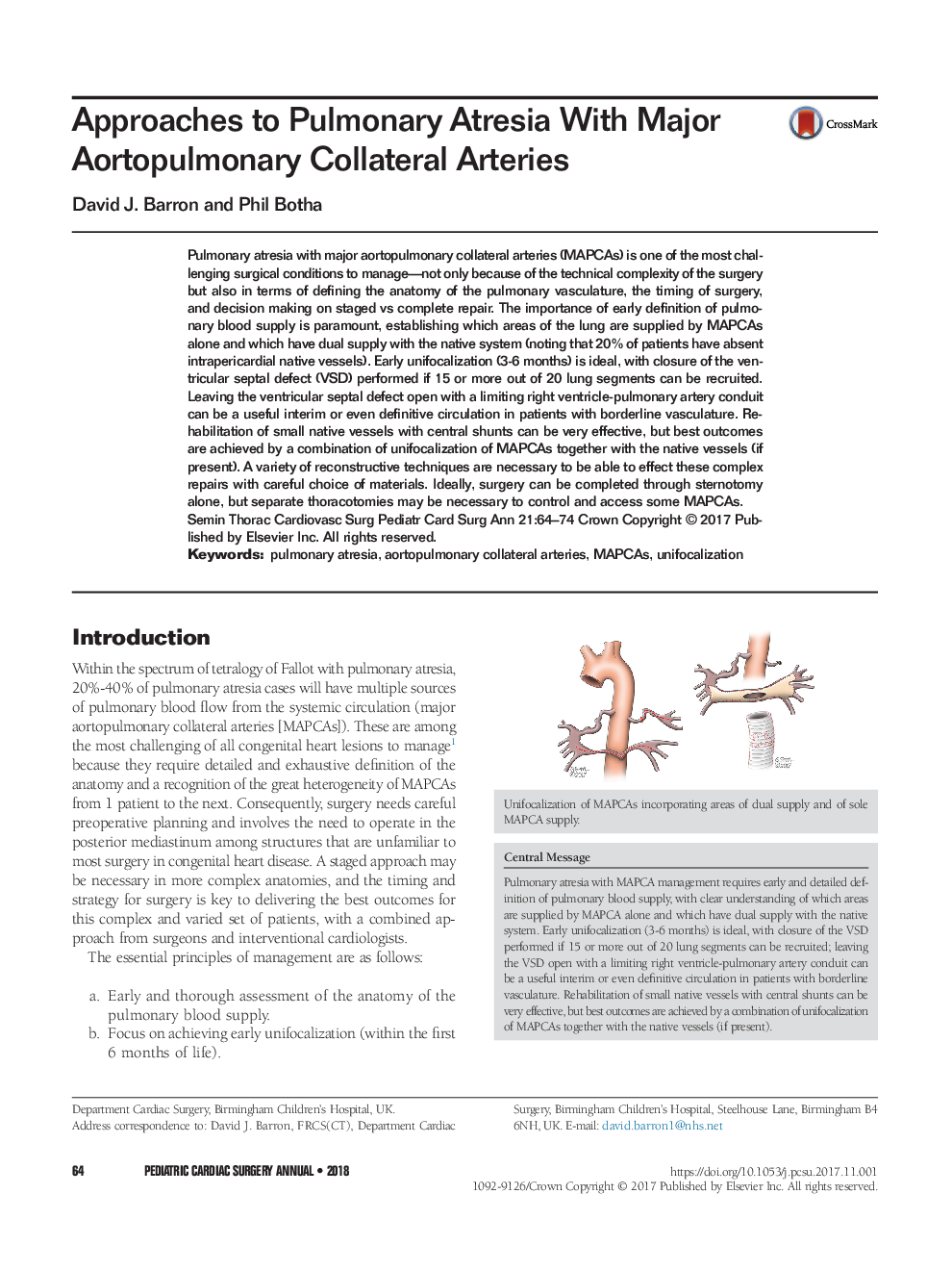| Article ID | Journal | Published Year | Pages | File Type |
|---|---|---|---|---|
| 8679223 | Seminars in Thoracic and Cardiovascular Surgery: Pediatric Cardiac Surgery Annual | 2018 | 11 Pages |
Abstract
Pulmonary atresia with major aortopulmonary collateral arteries (MAPCAs) is one of the most challenging surgical conditions to manage-not only because of the technical complexity of the surgery but also in terms of defining the anatomy of the pulmonary vasculature, the timing of surgery, and decision making on staged vs complete repair. The importance of early definition of pulmonary blood supply is paramount, establishing which areas of the lung are supplied by MAPCAs alone and which have dual supply with the native system (noting that 20% of patients have absent intrapericardial native vessels). Early unifocalization (3-6 months) is ideal, with closure of the ventricular septal defect (VSD) performed if 15 or more out of 20 lung segments can be recruited. Leaving the ventricular septal defect open with a limiting right ventricle-pulmonary artery conduit can be a useful interim or even definitive circulation in patients with borderline vasculature. Rehabilitation of small native vessels with central shunts can be very effective, but best outcomes are achieved by a combination of unifocalization of MAPCAs together with the native vessels (if present). A variety of reconstructive techniques are necessary to be able to effect these complex repairs with careful choice of materials. Ideally, surgery can be completed through sternotomy alone, but separate thoracotomies may be necessary to control and access some MAPCAs.
Related Topics
Health Sciences
Medicine and Dentistry
Cardiology and Cardiovascular Medicine
Authors
David J. Barron, Phil Botha,
